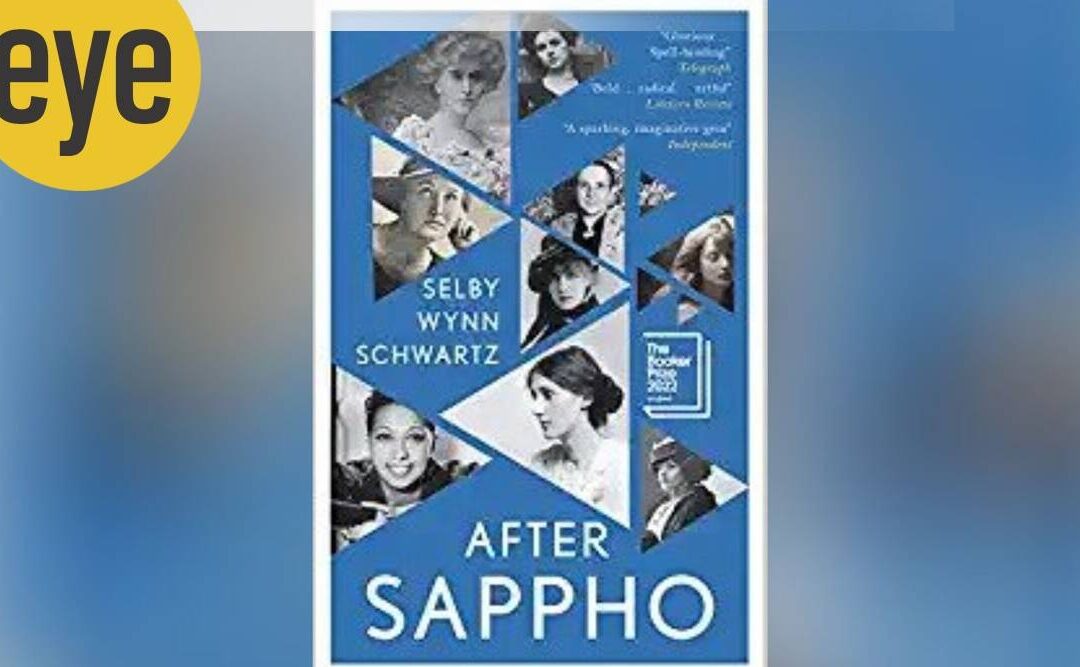[ad_1]
The ladies who inhabit Selby Wynn Schwartz’s After Sappho are by no means comfortable. Or by no means in a single place for too lengthy. The concluding years of the nineteenth century are disconcerting in quite a lot of methods, and so they navigate its vexations solely to reach at a brand new century fraught with recent bother. They modify their names or depart a wedding or a toddler or a rustic to grow to be, indelibly, who they are surely – sapphists, trousered and booted poets, vehement artists, lovers of journey guides and overseas grammar. This novel is, fairly actually, in regards to the ladies who realise themselves absolutely after Sappho, the skeins of their lives gloriously knotted as their geographies, and destinies alter.
Purchase Now | Our best subscription plan now has a special price
Sappho, the Greek lyric poet of the sixth century who was born on the island of Lesbos, is the presiding deity of After Sappho. She is invoked continuously by the narrator – the plural first-person “we”, suggestive of a feminine collective or a refrain, nonetheless younger, desperate to grow to be Sappho as they learn her fragmented poems in school, and really feel the lilt of phrases like aithussomenon,“the way in which that leaves transfer when nothing touches them however the afternoon gentle.”
This curious and excitable collective voice attracts us, the readers, into the histories of atypical ladies, into their strategies of transgressing the constraints of their intercourse, and of their milieu. Collectively we witness Cordula “Lina” Poletti nonetheless caught in 1896, discarding her skirts and climbing a tree in her underthings, to learn a Latin primer borrowed from the Biblioteca Classense. We observe Rina Pierangeli Faccio in 1895, giving delivery to a toddler conceived in violence, and swallowing a bottle of laudanum. We observe that she survives; we observe her in 1902, when she arrives in Rome, on their lonesome, rents a room with a writing desk, and adjustments her identify to Sibilla, a variation of the Delphic Sibyl. We watch as Pauline Tarn sloughs off “Plain, sensible Pauline, and flat yawning Tarn” to grow to be the one that arrives in Paris and takes a room on the rue Crevaux. She reads Sappho in a frock coat and breeches in 1899. “Within the lamplight she appeared like a modern, darkish line. She had grow to be Renée Vivien.”
After Sappho is in regards to the strategy of turning into, the difficulties it entails, the voyages it necessitates, the brand new loves it kindles, the furies it stokes. We’re supplied biographies as intimate tableaux that shift and transfer by means of a jagged timeline. Every disjointed vignette, with its protagonists at sea or on stage or in a besotted haze, is a part of the swirl of occasions that make the flip of the century a busy age.
Reverberating by means of the biographical fragments is the politics of the milieu. There’s a point out of Giovanni Giolitti, who was elected Prime Minister of Italy 5 instances, from 1892 to 1921. In 1912, the lads of his parliament vote towards ladies’s suffrage. There are different troubling legal guidelines, for example Article 544 of the Italian Penal Code, which recognises the wedding of a lady who has been violated to the person who has violated her. “Each time we might depart these marriages, we fled,” declares the collective narrator. After which it’s 1914: a radio crackles, photographs ring out, males grow to be troopers, the First World Warfare turns Europe into clumps of putrefying flesh. We witness the Irish architect Eileen Grey rush to the entrance in her ambulance; we hear that “She despatched phrase to us in Paris that there was an pressing want for ladies with regular palms; anybody who might tie a knot or drive a motor automobile may need her half in historical past.”
After Sappho is in regards to the women who’ve their half in reconfiguring historical past, or in altering its course so it doesn’t neglect them. Every chapter comprises sections with titles that identify a feminine protagonist, along with the yr that’s indicative of whether or not she has but to grow to be, or is within the throes of her splendid turning into. Sapphic fragments are interwoven into this intentionally discontinuous construction. And there’s one other voice, not fairly as hypnotic as Sappho’s, however insistent and prophetic, that slithers into the narrative. Cassandra, who in Greek mythology is a Trojan priestess who can foresee the longer term however is cursed by the god Apollo to by no means be believed, is evoked continuously. “She was all the time seeing serpents and flames, birds and blood.” The collective narrator is cautious of Cassandra, however seeks her out, irresistibly, for it’s she who scans the previous for violence that may recur by means of the centuries.
Regardless of its ambition and the worthiness of its activity, After Sappho, longlisted for the Booker Prize this yr, isn’t a ponderous novel. Its sentences, peopled with trailblazing ladies, aren’t weighed down by them. Schwartz’s sketches sparkle just like the flutes of Kir served at Natalie Barney’s salon at 20 rue Jacob, Paris. It is a novel that’s enamoured of shifts in gentle, the various moods of a lover, skinny cucumber sandwiches. It is a novel that always ripples with indelicate mirth. For it’s not possible to not chuckle, when, in 1918, a sure Noel Pemberton Billing denounces the dancer Maud Allan within the papers as “a excessive priestess of the Cult of the Clitoris.”
We are able to solely guffaw on the unintended praise.
Radhika Oberoi is the creator of Stillborn Season, a novel set amidst the anti-Sikh riots of 1984
[ad_2]
Source link


Recent Comments